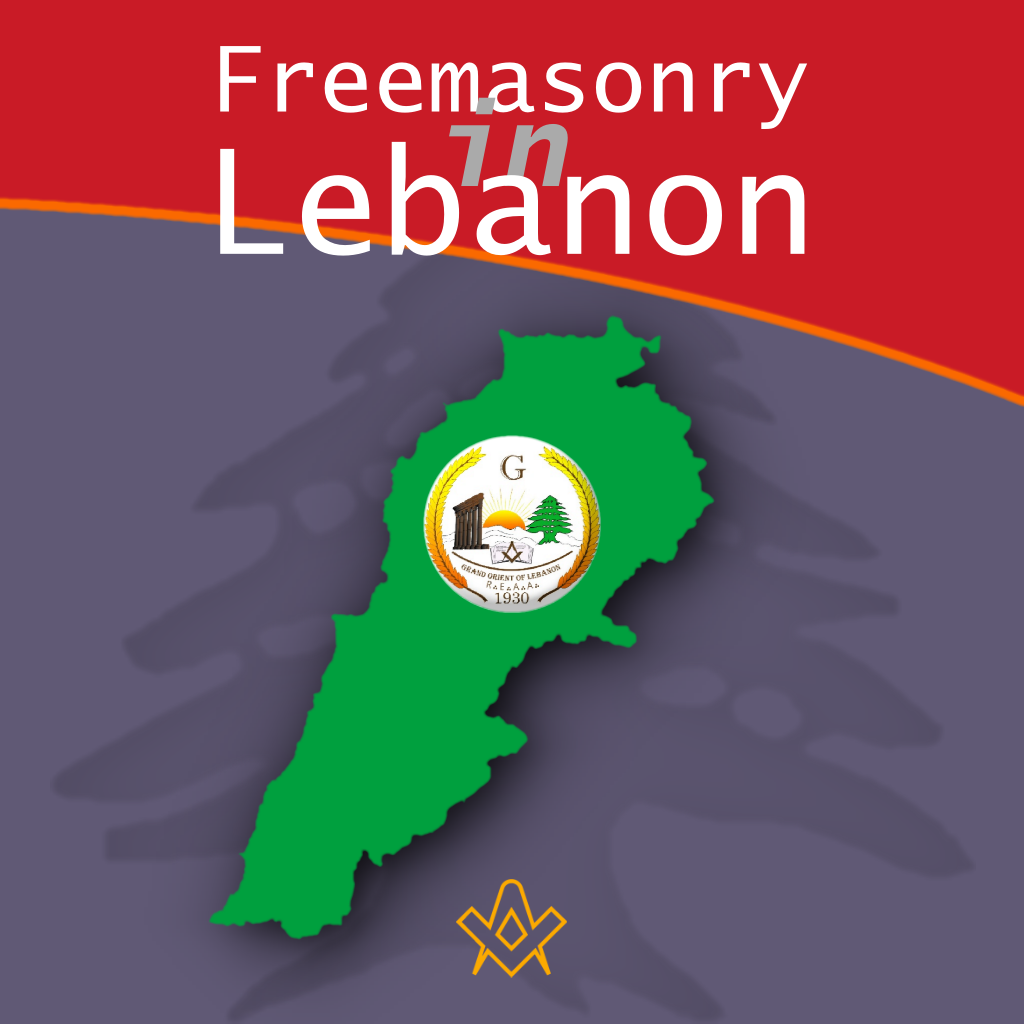It was the Grand Lodge of Scotland and, somewhat surprisingly, the Grand Lodge of New York, that have been responsible for some of the regular lodges located in this country.
The first Scottish lodge was formed at Beirut in 1862, working in French.
After several dormant periods, it ceased operation in 1895. Four other Scottish lodges were erected in Lebanon up until the time of the First World War, but only some of these revived thereafter.
Lebanon has an unparalleled Masonic history.
The Grand Orient of France was next into Lebanon, forming a lodge in 1869, working in Arabic. Two further lodges followed.
None survived the First World War. Other new lodges formed before the Great War were a lodge at Beirut under the Ottoman Grand Lodge (later the Grand Lodge of Turkey), and a lodge under the National Grand Lodge of Egypt, erected about 1914.
A number of other Egyptian-warranted lodges were chartered thereafter, and after the First World War these were formed into a District Grand Lodge.
By the end of World War II, it would seem these lodges were extinct, merged, or hived off into various spurious ‘Masonic’ bodies.
An exception would appear to be a ‘Grand Orient of Lebanon’, which was founded in 1938, descended the Grand Lodge of Egypt and the Grand Lodge of Scotland which still exists today, and with relative success.
Until recent years, five Scottish lodges had survived in Lebanon, with a few others being less fortunate.
The three lodges in Beirut met at the aptly named Peace Lodge Building, in Beshara Street, Beirut. With the start of the Lebanese Civil War in 1975, the Scottish lodges found continuance impossible and all five became dormant.
The first New York chartered lodge was the Syrio-American Lodge #1, formed in 1924 by returning American-Lebanese immigrants. Several further lodges were erected prior to World War Two, and subsequently.
With the exception of one lodge originally erected in Syria, all New York chartered lodges in its Syria-Lebanon District (ten in total) have operated in recent times.
During the Lebanese Civil War, most lodges became dormant, although at least Syrio-American lodge continued to meet intermittently.
Since the cessation of the civil war, only two of the five Scottish lodges have re-commenced work, though it is hoped the three remaining dormant will be restored in the future.
All the New York lodges revived after the civil war, although some are still experiencing meeting difficulties. One further mainstream lodge has been previously chartered in Lebanon.
This is Fraternità Italo-Libanse, erected at Jounieh in 1989 under the Grand Orient of Italy. However, it is reported as not meeting currently.
A large range of other lodges and Grand Lodges operate in Lebanon. The Grand Orient of France has two lodges in Beirut.
Over the years a large number of spurious and/or self-constituted Grand Lodges have been erected in Lebanon.
Others include the Lebanese Grand Lodge, the Federal Grand Lodge of Lebanon, and the United Grand Lodge for Lebanon, the United Lebanese Grand Lodge, and about twenty other so-called Masonic bodies.
Many of these ‘Grand Lodges’ have one constituent lodge and a ‘Grand Master for Life’.
Not a few sell Masonic degrees for profit. The existence of these spurious and disreputable ‘Grand Lodges’ does nothing to enhance the public profile of Masonry in Lebanon, or the wider Arab world.
A group of the Masonic brothers who were working under foreign sponsorship called for the establishment, respectively, under the auspices of the Grand Egyptian Forum.
Sometime after the establishment of these forums, and in order to facilitate the conduct of business in them, a number of Distinguished Presidents met and presented to His Highness Prince Mohammed Ali, the Grand Master of the Egyptian Grand National Forum, a petition in which they hoped to establish a regional forum working under his authority in Lebanon, Syria and Palestine, headed by His Highness Al-DAMAD Ahmed Nami Bey as a regional grand professor, and that was in early 1923.
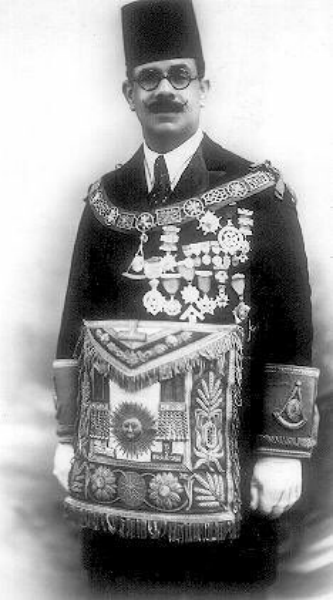
Judge Ragheb Idriss Bey, Grandmaster of The Grand Lodge of Egypt from 1891-1923
IMAGE LINKED: wikimedia Attribution 4.0 International (CC BY 4.0)
After a long lesson and repeated reviews, on December 30, 1923, the Grand Master of Egypt issued a high Order No. 535 authorizing the establishment of a regional grand forum under the name of the regional grand rural forum of Syria and Palestine (Lebanon and Syria were then one country) and appointed His Highness Al-DAMAD Ahmed Nami Bey as a regional grand Inspector.
The broadcasting of this largest regional forum is working hard and actively until its forums in Lebanon became twelve forums joined by many of the Sons of forums operating under foreign authorities, despite the friendship and cooperation that existed with them.
After the legal period of seven years had passed since the establishment of the regional grand Forum, the brothers appealed to the presidents in Lebanon and on June 22, 1930, they submitted a petition to His Excellency the Grand Master of the Egyptian national grand Forum, Mr. Mohamed Fahmy Bey, in which they requested granting independence to the regional rural Grand forum under the name of the Grand Orient of Lebanon.
This petition was signed by the regional Grand Master, His Highness DAMAD Ahmed Nami Bey, representing the Rashid forum No. 225, Beirut forum No. 226, fortitude forum No. 224, Walid forum No. 246, and the Union No. 240 and the Knowledge Forum No. 247 in east Beirut, The Phoenicia forum No. 237 in East Hadath in Mount Lebanon, the Amin port forum No. 245 and the Hermon No. 238 in eastern Tripoli, Hermon forum No. 242 in eastern Rashaya al-Wadi, Bekaa al-Aziz forum No. 250 in eastern Zahle, and Hermel forum No. 252 in eastern Hermel.
The distinguished brothers Amin Abu Morshed, Badie alhashem, Georgy bendley, Kamel Gemayel and Elias almadour, members of the Egyptian High Council, Jamil al-Khatib, chairman of the Al-Waleed forum, Tawfik Abu Morshed, chairman of the Hermon Rashia Forum, Mahmoud Abu Hamza, chairman of the Knowledge Forum, Awad Ibrahim, chairman of the Bekaa forum, Farhan al-Emad, chairman of the Hermel forum, George bendley, chairman of the Al-Mina Al-Amin forum, and Alexander bendley, chairman of the Hermon Tripoli forum, also signed with him.
This petition was referred to the Standing Committee, which met on 15 October 1930 and unanimously approved the establishment of the Independent Lebanese Greater East and reported this to all authorities allied with the Egyptian Grand National Forum.
On October 20, 1930, Grand Master Mohammed Fahmy Bey issued a high Order No. 637 declaring the Grand Orient of Lebanon an independent and sovereign Masonic authority, and His Highness Al-DAMAD Ahmad Nami Bey assumed the authority of the Grand Master.
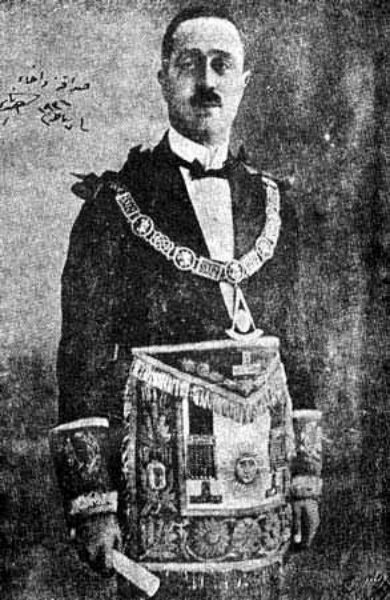
Ahmad Nami dressed in full Masonic attire in 1925.
IMAGE LINKED: wikimedia Attribution 4.0 International (CC BY 4.0)
The Second World War broke out in 1939, and the Mandatory authorities in Lebanon ordered the closure of the forums at all its dawns, so that when the war ended, the Grand Orient of Lebanon returned to work under the chairmanship of grand State professor Sami Bey Al-Solh.
In 1958, the great professorship was assigned to His Excellency brother Selim Bey Al-Turk, who was sad to see Freemasonry as parties and diasporas, so he did his best to reunite it and set a modern law for it that matched the renewal he wanted for it.
In 1960, he had a meeting with the Grand Master of the Syrian-Lebanese Grand National Forum in Lebanon, His Excellency Bashir Bek Al-Awar, and the Grand Master of the Syrian-Lebanese Grand National Forum in Syria, His Excellency Mohammed Bek Al-Meydani, and they agreed to unify the free building, so they all joined under a new Masonic Authority called the Lebanese Grand Orient for Lebanon and the Lebanese in the countries of the diaspora, to be a continuation of the previous authority that bore this name while retaining its grand master, to whom his colleagues had ceded and exclusive authority in it .
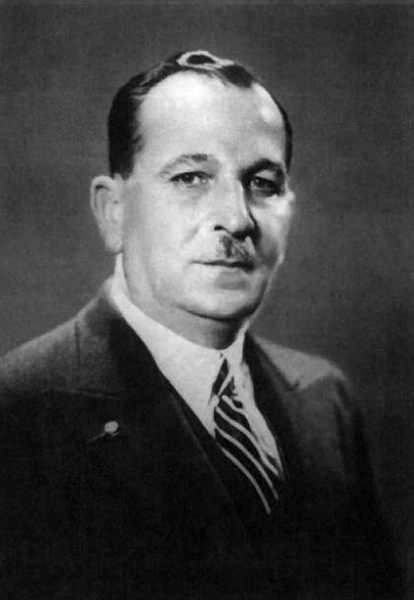
Sami Bey Al-Solh.
IMAGE LINKED: wikimedia Attribution 4.0 International (CC BY 4.0)
On November 13, 1964, the Lebanese government recognized the Grand Orient of Lebanon as the supreme authority of Freemasonry in Lebanon under the flag and news No. 235/1 D.
On November 27, 1964, under No. 941/4 P, the minister of Interior addressed a letter to the great professorship informing her that science and news are considered a settlement of the status of all forums operating in Lebanon since the date of their establishment in the Ottoman era and beyond.
The Second World War broke out in 1939, and the Mandatory authorities in Lebanon ordered the closure of the forums at all its dawns, so that when the war ended, the Grand Orient of Lebanon returned to work under the chairmanship of grand State professor Sami Bey Al-Solh.
The Grand Masters of The Grand Orient of Lebanon
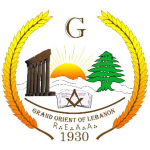
|
1958 – 1960 |
Prime Minister Sami Bey ElSolh |
|
1960 – 1970 |
Salim Bey El Terek |
|
1970 – 1973 |
Mohammad Al Bacha (writer) |
|
1973 – 1974 |
Bahij Chabaan |
|
1974 – 1980 |
Kamil Berberi |
|
1980 – 1982 |
Prime Minister Rashid El Solh |
|
1982 – 1990 |
Moustafa Mokaddem |
|
1990 – 1992 |
Alexie Haye |
|
1992 – 1993 |
Dr. Antoine Nashanakyan |
|
1993 – 1999 |
Dib Younes |
|
2000 – 2003 |
Khalil Abu Jawde |
|
2004 – 2006 |
Gaby Awad(Lawyer) |
|
2006 – 2009 |
Ahmad Lakiss |
|
2010 – 2012 |
Dr Nabil Khoury |
|
2012 – 2014 |
Assad Kenaan |
|
2014 – 2014 |
Dr Michel Khoury (Dismissed) |
|
2015 – 2018 |
Dr. Walid Abou Dehn |
|
2018 – 2021 |
Dr. Walid Abou Dehn |
|
2021 –
|
Dr. Walid Abou Dehn |

Grand Master Dr. Walid Abou Dehn
IMAGE credit: supplied by author
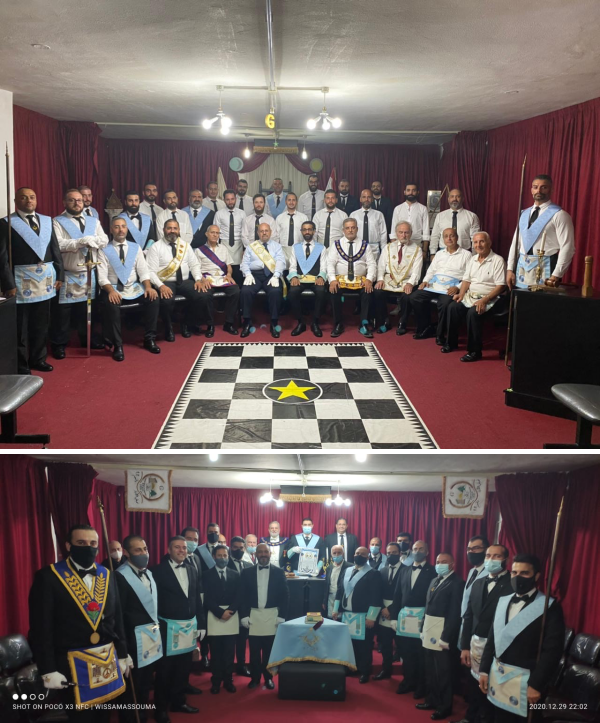
lodge members
IMAGE credit: supplied by author
Famous Lebanese Freemasons
Lebanese Masons played a significant role as MEN in Lebanon history. Lebanese Freemasonry has been both witness to and sometimes participants in the events which occurred. In addition, the events and forces which shaped our world from the beginning unto today have influenced us.
Kahlil Gibran (1883–1931) was a Lebanese-American artist, poet, and writer. He is chiefly known in the English-speaking world for his 1923 book “The Prophet”.
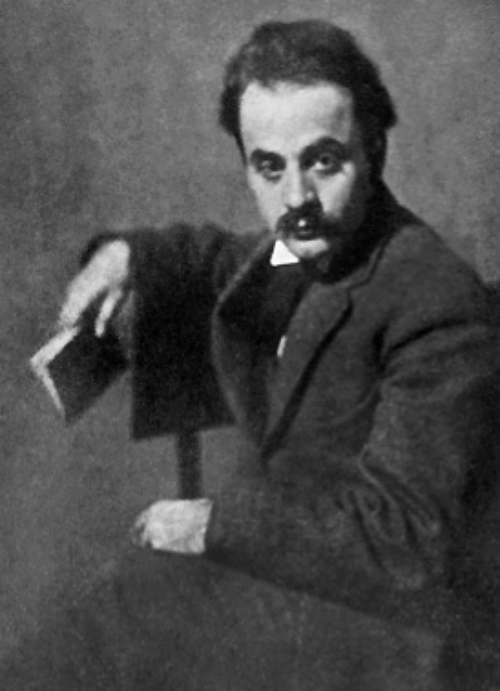
Kahlil Gibran, Photograph, Al-Funoon, 1, No. 1 (April 1913)
IMAGE LINKED: wikimedia Attribution 4.0 International (CC BY 4.0)
Emir Majid Arslan was a national political figure with a role in Lebanon’s independence, a long-running Member of the Lebanese Parliament, and a government minister several times.
Charles Debbas (1885 – 1935) was a Greek Orthodox Lebanese political figure. He was the first President of Lebanon.
Camille Nimr Chamoun (1900–987) was President of Lebanon from 1952 to 1958.
Riad as-Solh (1894–1951) was the first Prime Minister of Lebanon (1943–1945)
Antoun Saadeh (1904–1949) was a Lebanese Syrian philosopher, writer and politician.
Charles Habib Malik (1906-1987) was a Lebanese philosopher and diplomat, Malik represented Lebanon at the San Francisco conference at which the United Nations was founded.
Mikhail Naimy (1889 1988) was a Lebanese author and poet of the New York Pen League.
Bachir Gemayel (1947–1982) was a Lebanese politician, militia commander, and president-elect.
Rashid El-Solh was a Lebanese politician and former Prime Minister, kin of one of the most powerful Sunni families in the country
Ibrahim al-Yaziji (1847–1906) was a Lebanese philologist, poet and journalist. Christian Catholic
Adel Osseiran was a prominent Lebanese politician and statesman, a former Speaker of the Lebanese Parliament, and one of the founding fathers of the Lebanese Republic.
Masonic sites in Lebanon
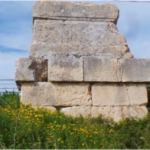
This tomb, which can be found near Hannaouiye (some six kilometers southeast of Tyre along the road to Qana), in fact dates to the Persian age (i.e. 539-332 BCE
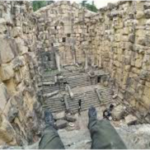
Niha is home to four temples that were constructed between the 1st and 3rd century AD. The Lower two temples are located on the edge of the village, and the upper two temples are about 2 km above the village in what is known as “Hosn” Niha.

Cedar of Lebanon (Cedrus libani)
The cedar forests of Lebanon enjoy the unique distinction as the oldest documented forests in history.
The Phoenician king Hiram of Tyre supplied King David with cedar and woodworkers to build David a royal palace.
David felt guilty that he had such luxurious accommodations while the Ark of the Covenant was still housed in the Tabernacle, the “Tent of Worship”.
Said King David, “Here I am living in a house of cedars while the Ark of the true God sits in the midst of tent cloths.”
(2 Samuel 7:2). King Solomon later had a royal building constructed which came to be called, “The House of the Forest of Lebanon”.
The Bible mentions the cedar of Lebanon, or cedar wood, over 70 times.
Masonic Web Site Links
Grand Orient of Lebanon

Who are SOGLIA?
Society of Grand Lodges in Alliance (SOGLIA) is a confederation of Grand Freemason Obediences in which all members obey the principles of Regularity. Assembled annually, in different places of the world, in order to share fellowship and to promote Masonic tradition, SOGLIA members are respecting the autonomy of each Grand Lodge.
more….
About the Author
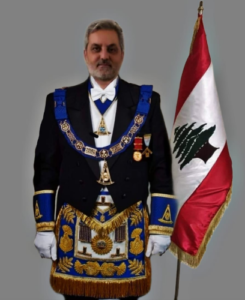
Grand Master Dr. Walid Abou Dehn
Books by Lebanese Freemasons

The Prophet
By: Kahlil Gibran
The timeless in you is aware of life’s timelessness. And knows that yesterday is but today’s memory and tomorrow is today’s dream.
Through the voice of the prophet AlMustafa, Kahlil Gibran touches on the many intricacies of life and the human condition. Love, marriage, children, friendship, joy and sorrow — just a sample of the wide ranging thoughts that effortlessly touch on the mind and soul.
An inspiration to millions of people, The Prophet by Kahlil Gibran is widely considered to be a masterpiece of spiritual poetry. This book contains all twelve original drawings Gibran created specifically for The Prophet upon its first publication.

El libro Mirdad [Spanish edition]
By: Mikha’il Nu’ayma
The Book of Mirdad is an allegorical book of philosophy. It is presented as a series of dialogues between Mirdad, abbot of a monastery, and his disciples. The Book of Mirdad is based on a variety of philosophies.
Through allegories, in the book presented by Mirdad, Mikhail Naimy presents various themes and calls for the unity of different groups of people in universal love, as well as criticizing materialism and empty religious rituals.
Mirdad’s dialogues give teachings that show us how it is possible to transform our consciousness and discover the inner God, dissolving our sense of duality.
Naimy described his work as “the pinnacle of his thought and a summary of his outlook on life.” The Indian mystic Osho mentioned The Book of Mirdad in his book “A Song Without Words”, saying that “it can be of great help if you don’t expect it, and it is a book worth reading thousands of times.” The Book of Mirdad is considered a masterpiece of spiritual wisdom.
Recent Articles: of current interest
 Keeping Passions and Prejudices within Due Bounds Master your emotions and find balance in a chaotic world with Darren Allatt's "Keeping Passions and Prejudices within Due Bounds." Discover practical strategies for self-awareness, emotional intelligence, and building meaningful relationships. Transform your life with calmness, clarity, and purpose. Start your journey towards emotional mastery today. |
 Masonry in the Age of Leisure - P2 Explore the optimistic future of Masonry in "Masonry in the Age of Leisure" by VVenBro Scott Wisdahl. Delve into the possibilities of a leisure-driven society where technology enhances social bonds, decentralizes the Craft, and reshapes Masonic traditions. Discover how Masonry can thrive in an interconnected, tech-savvy world. |
 Masonry in the Age of Leisure - P1 Embrace the future of Masonry in the Age of Leisure! Imagine an era where technology empowers deeper connections, offering a tapestry of diverse groups united by Freemasonry’s timeless values. Envision hybrid meetings transcending borders, fostering brotherhood across continents. This optimistic future cultivates intellectual growth and social interaction, heralding a Masonic renaissance for all. |
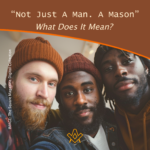 “Not Just A Man. A Mason”: What Does It Mean? Embrace the profound essence of Freemasonry, not merely a group but a journey of integrity, shaping men of dignity. By adopting virtues such as honesty, justice, and brotherly love, Freemasonry transcends time, urging us towards a dignified life. It’s more than being a man; it’s about living with unyielding dignity. |
 Multiculturism and the Culture of Freemasonry Freemasonry, with its deep roots in universal principles such as individual freedoms, education, and the pursuit of science, stands as a beacon of unity in a world divided by conflicting ideologies. By embracing the tenets of Freemasonry, including respect, peace, and mutual understanding, we can navigate societal challenges and foster a more harmonious world. |
 Embrace the new paradigm of eco-conscious living in the 21st century. Freemasonry, a cornerstone of society, must evolve, placing Nature at its heart. Reject anthropocentrism, embrace deep ecology, and champion sustainable living and global cooperation. Let Freemasonry lead by example, advocating for a world where humans and nature coexist harmoniously. |
 How Freemasonry Has Woven Itself into the Fabric of Society Like the weathered stones of an ancient temple, Freemasonry's origins are shrouded in mystery. This fraternal order has woven invisible threads throughout society's fabric since emerging in the 1600s. Despite declining membership, Freemasonry's influential legacy endures, seen in philanthropy, architecture, and the ideals of legendary members. Though facing challenges, revival remains possible if it adapts traditions to the modern era. |
 AI help in matching mentors with new Freemasons Harnessing AI for Freemasonry Mentorship: A Comparative Analysis. Freemasonry, an age-old fraternity, seeks to enhance its mentorship program by leveraging AI. While the Grand Master suggests detailed member profiles for matching, a Professional Coach emphasizes personality compatibility. Meanwhile, an AI Bot proposes machine learning for pattern recognition. Dive in to explore the potential and pitfalls of each approach. |
 Masonic Charities P.2 – The Shriners Discover the Shriners' legacy within Freemasonry; delve into their profound commitment to philanthropy and see how Masonic Charities demonstrate brotherly love, relief, and truth. Become inspired by the bonds that unite Shriners around the globe and their impactful work in local communities. |
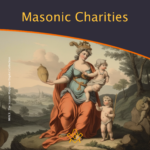 Freemasonry's commitment to charity has always been a priority and remains a core principle, reflecting its mission to promote brotherly love, relief, and truth in the world. Part 1 of the series gives an introduction to the establishment of the main Masonic Charitable endeavours in the 18th and 19th centuries and several key influencers. |
 Solomon Learning and Development Platform The Intersection of Freemasonry and Technology: Embracing the Digital Age with the New |
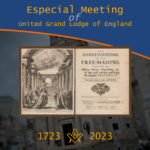 Especial Meeting of United Grand Lodge of England The year 2023 marks the tercentenary of the publication in London of the Constitutions of the Freemasons, based on Enlightenment principles that provide the philosophical foundations of modern Freemasonry. Why are the 1723 Constitutions important? Many Masonic histories have been concerned with ‘when’ and ‘what’. We also explore ‘why?’ |
 Like every other incident of initiation it is in the light of the larger meanings of Freemasonry that we must interpret the Rite of Destitution. But what does it mean? |
 Society of Grand Lodges in Alliance (SOGLIA) is a confederation of Grand Freemason Obediences in which all members obey the principles of Regularity. Assembled annually, in different places of the world, in order to share fellowship and to promote Masonic tradition, SOGLIA members are respecting the autonomy of each Grand Lodge. |
 Confederation of the Grand Lodges of Europe and the Mediterranean - Universal Freemasonry and its intellectual property are less and less taken into account in the current times of constant movement and unclear future prospects. |
 The Book of Law in Brazilian Freemasonry We are informed that, Freemasonry it is not a religion, but the candidate has a belief in a creative principle, which later, we call the Great Architect of the Universe. - by Fernando Rodrigues de Souza |
 Mike's Masonic Walks And Talks WBro. Mike Neville is a Masonic author and lecturer. He offers walks and talks primarily around London, based on his vast knowledge of the area and his specialist subjects, which cover all aspects of Masonic history. |
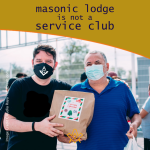 A Masonic lodge is not a service club An address delivered to the 10th Annual Conference of Western Canadian Grand Lodges (1950) in response to the question, "Should Our Western Grand Lodges Sponsor a Specific Program?" By |
 The Order of Bees was established as a youth initiative for the boys and girls of Prince Hall Freemasons, and symbolises the relationship existing between the activities of the youth and the family of bees. |
 The Confederación Masónica Interamericana (CMI) was founded in 1947, is a non-profit organization that groups together 92 Great Masonic Powers, admitted as members and distributed in 26 countries in South, Central, North, Caribbean and Europe. |
 This smartphone app is designed to work with all Freemasons from both Regular and Independent Grand Lodges around the world. |
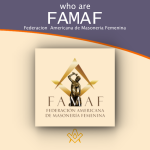 The American Federation of Feminine Freemasonry (FAMAF) is an organization that brings together Grand Lodges, Grand Orients and Confederations of Feminine Masonic Grand Lodges from the American continent. |
 The third largest Masonic Alliance of independent grand lodges, which currently has over 500,000 members in the world and an incredible resource of "good people with a good reputation" from around the world. |
 A Guiding Paw - my faithful 'brethren' A heart-warming story of one Mason's best friends – and how Gary's faithful guide dogs have helped fulfil both his Masonic life but also his valuable work in public service. |
 A visit to the Mother Lodge of Scotland Let me take you to the heart of Scotland to meet our Brethren of the Mother Lodge of Scotland, a journey into one of Freemasonry's deepest roots. Our guide Carlos Oliveira Santos who is from |
 An introduction to VEREINIGTE GROSSLOGEN von Deutschland / UNITED GRAND LODGES of Germany |
 International Masonic Union CATENA An international association of Grand Lodges and independent Lodges, with all true Masonic traditions, which adhere to the basic principles of the equal standing of men and women in Freemasonry |
 Social Impact of Prince Hall Freemasonry in D.C., 1825-1900. Alonza Tehuti Evans discusses Prince Hall Freemasonry, founded by African Americans. |
 Who are the Widows Sons, and what do they do, and how can you join ? |
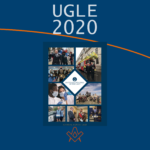 For the first time in its 300 year history UGLE has published an Annual Review |
 Founded in 1919 and named after the Grand Master of the Knights Templar, this International Order has helped young boys become great men. |
 9th International Conference of Freemasonry Hidden Meanings: Esotericism and Masonic Connections |
 An introduction to CLIPSAS and we look at who are they and what do they do |
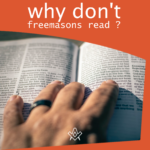 The title of this article will seem somewhat of an oxymoron, because at this precise moment you, most likely a Freemason, is reading this |
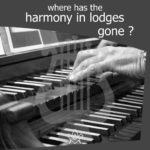 Music can make you either remember everything or forget everything! They even call it the 'rhythm' of life because life does have a beat, a rhythm, a song! Music is equally important for Freemasons. |
 Young Masons' Inter-Club Virtual Social An initiative was created to initially keep Brethren engaged in their Masonry whilst the restrictions of the COVID-19 pandemic are in place. |
 I've heard people say that we don't have heroes |
 What can we learn from Steve Jobs' address given at Stanford in 2005 |
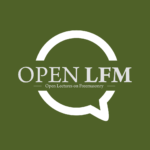 Open Lectures on Freemasonry as a series of monthly online lectures that aims to increase the visibility and accessibility of research into Freemasonry. The lectures are open to anyone who is interested. |
 What Kind of Library Do You Have? Many Brothers have no clue as to what kind of "Craft" library they actually have in their home or office. Most of these Brothers don’t care that they don't know – so, what kind of library do you have? |
 Russian Freemasonry a combination of a short sketch of its history and a review of the present-day Masonic landscape in this country |
 A brief outline showing the differences and similarities within Freemasonry |
masonic knowledge
to be a better citizen of the world
share the square with two brothers

click image to open email app on mobile device



